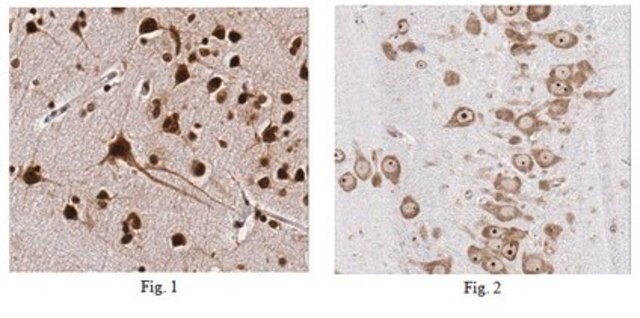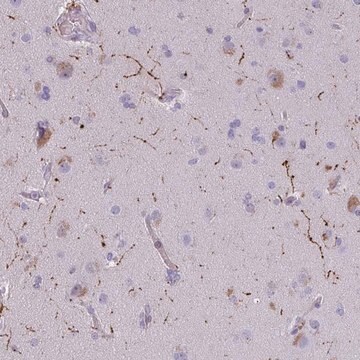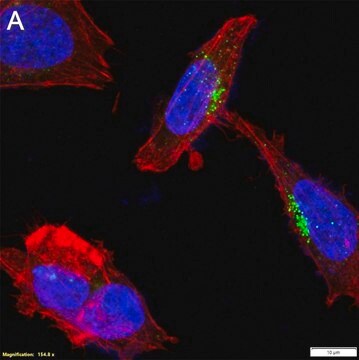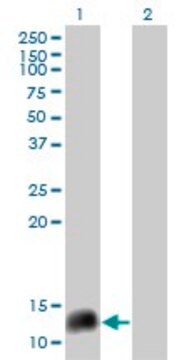N9528
Anti-Neuropeptide Y (NPY) antibody produced in rabbit
whole antiserum
Synonym(e):
NPY Antibody - Anti-Neuropeptide Y (NPY) antibody produced in rabbit, Npy Antibody
About This Item
Empfohlene Produkte
Biologische Quelle
rabbit
Qualitätsniveau
Konjugat
unconjugated
Antikörperform
whole antiserum
Antikörper-Produkttyp
primary antibodies
Klon
polyclonal
Enthält
15 mM sodium azide
Speziesreaktivität
rat, sheep, pig, human
Verpackung
antibody small pack of 25 μL
Methode(n)
: suitable using suitable for IHC on rat brain perfused with 4% paraformaldehyde
indirect ELISA: 1:5,000-1:10,000 using using peptide coating at 0.5-1 μg/well in 0.05 M carbonate/bicarbonate buffer, pH 9.6, and pNPP as substrate
UniProt-Hinterlegungsnummer
Versandbedingung
dry ice
Lagertemp.
−20°C
Posttranslationale Modifikation Target
unmodified
Angaben zum Gen
rat ... Npy(24604)
Allgemeine Beschreibung
Spezifität
Immunogen
Anwendung
- single-labeling immunocytochemistry
- immunofluorescence
- immunostaining
- dot blot
- radioimmunoassay (RIA)
- enzyme-linked immunosorbent assay (ELISA)
Biochem./physiol. Wirkung
Haftungsausschluss
Sie haben nicht das passende Produkt gefunden?
Probieren Sie unser Produkt-Auswahlhilfe. aus.
Lagerklassenschlüssel
12 - Non Combustible Liquids
WGK
WGK 3
Flammpunkt (°F)
Not applicable
Flammpunkt (°C)
Not applicable
Analysenzertifikate (COA)
Suchen Sie nach Analysenzertifikate (COA), indem Sie die Lot-/Chargennummer des Produkts eingeben. Lot- und Chargennummern sind auf dem Produktetikett hinter den Wörtern ‘Lot’ oder ‘Batch’ (Lot oder Charge) zu finden.
Besitzen Sie dieses Produkt bereits?
In der Dokumentenbibliothek finden Sie die Dokumentation zu den Produkten, die Sie kürzlich erworben haben.
Kunden haben sich ebenfalls angesehen
Unser Team von Wissenschaftlern verfügt über Erfahrung in allen Forschungsbereichen einschließlich Life Science, Materialwissenschaften, chemischer Synthese, Chromatographie, Analytik und vielen mehr..
Setzen Sie sich mit dem technischen Dienst in Verbindung.







